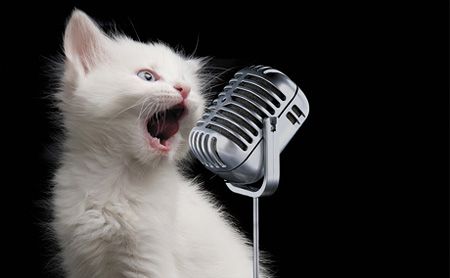Just Ask the Expert: The nightmare of the midnight serenade
A little night music is not so pretty when it's coming from your kitty-and you're trying to sleep. Here's how to help clients curtail the caterwauling.
Dr. Ciribassi welcomes behavior questions from veterinarians and veterinary technicians.
Click here to submit your question, or send an email to vm@advanstar.com with the subject line "Behavior questions."

(Getty Images)
Q. What medical and behavioral conditions may cause senior cats that previously slept all night to start excessive vocalization-or yowling-in the middle of the night?
A. Medical issues for a change in the pattern of a cat's vocalization can include:
- Reduced hearing acuity
- Osteoarthritis, making it difficult for the cat to perform activities it was previously accustomed to performing, such as jumping up in bed with the owner or climbing stairs
- Any condition causing pain, such as otitis, osteoarthritis and oral pain
- Conditions causing polyuria/polydipsia, such as renal disease, lower urinary tract disease and diabetes mellitus
- Hyperthyroidism, causing hyperactivity and polyphagia
Once you've ruled out these medical issues, look into behavioral causes.
“Land of confusion”
The primary behavioral reason for abnormal vocalization in cats is feline cognitive dysfunction. This condition is commonly seen in senior cats, with the greatest percentage showing up in cats over 15 years of age. Pacing and disorientation can accompany the vocalization. Treatment can include using antioxidant supplements such as Novifit (Virbac) or Senilife (Ceva). Adding selegiline to the treatment plan might be needed as well (note: this is extralabel usage).
Increasing the cat's enrichment level can also be beneficial by adding regular periods of interactive play and self play opportunities. Some cats like to be walked outside on harnesses (yes, really)-an activity that can help stimulate cognitive activity.
“Don't come around here no more”
Cats can vocalize in response to animal activity outside the home. Covering the windows with a stick-on, opaque window film can help decrease visibility to reduce this behavior. The Scarecrow animal deterrant (Contech) can be used to reduce animal activity around the home. This is a motion-activated water spray device that can be positioned near the area where animal activity is occurring.
“Hungry like the wolf”
A vocalizing cat may just want some love and attention (or food!). To manage attention-demanding or food-demanding behavior, it can be effective to suggest that your clients close the door to the bedroom, if this is an option. If not, see my answer here about handling fluffy bundles of energy at night.
John Ciribassi, DVM, DACVB
Chicagoland Veterinary Behavior Consultants
Carol Stream, Illinois